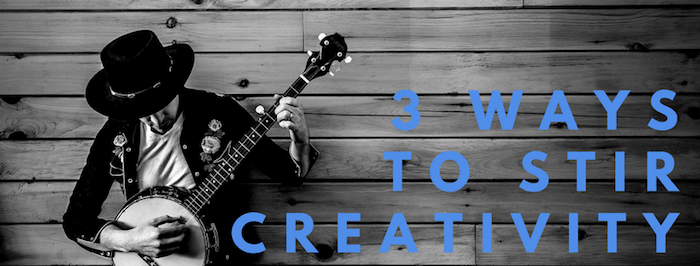
Sometimes, we get into musical ruts where we feel like we’re just playing and writing the same things over and over again, whether that’s using the same chord voicings, playing the same fills, or writing the same melodies all the time.
It’s possible that you’ve gotten a little too comfortable and need to break out of that dreaded comfort zone to let those creative juices flow. In this blog, we’ll go over a 3 ways you can get uncomfortable that may inspire a new wave of creativity.
1. Play/study a genre you’re unfamiliar with.
Even if you’re a rock musician, you just might learn something valuable by playing along to a reggae track! But don’t just play the stuff you always do. Learn what’s actually on the record and try to play as close to that as possible. You will likely come across some techniques, phrasings, tones, or chord voicings that you might not have otherwise ever played.
2. Change your setup.
For a drummer, this might mean removing or rearranging your drums and cymbals. Maybe limit the number of toms and/or cymbals you use or move things that are traditionally on your right side to your left, such as your floor tom or ride cymbal.

For a melodic and harmonics instruments (piano, guitar, bass, etc.), this could mean removing or even adding some effects. You can also change the EQ of your instrument and this will likely change the way you play and give you some new ideas for arranging your songs.
3. Change your tuning.
If you’re a guitarist or bassist, maybe experiment with some new tunings that you haven’t tried out yet. Some options are:
- Drop Tunings
- Lower the low E-string by a whole step
- Down Tunings
- Tune the entire instrument down 1 – 4 half steps
- You will want to use heavier gauge strings for this unless you want your strings to feel like spaghetti!
Open Tunings
-
- Tune your instrument to an actual chord!
- If you know what notes a chord is comprised of, you can make some open tunings up for yourself but if you need some help, click here for some ideas!

If you’re feeling really adventurous, you can even pick up a partial capo (like this one) to capo only a few strings on your guitar instead of the whole thing!
If you’re a drummer, try tuning certain drums differently than you normally do. This will affect the way you play and should open you up to some new ideas you otherwise wouldn’t have thought of. Some things you can try are:
- Apply more or less dampening than you normally do.
- If your bass drum is normally low and punchy, try tuning it higher and more open like used in jazz music.
- If you typically crank your snare drum; try tuning it much lower and loosen up the snare wires for that fat and deep sound a lot of guys are trying nowadays.
- The Big Fat Snare Drum insert is a cheap and quick way to achieve this sound! Click here to get it on Amazon!
- You will probably find that faster subdivisions on a low tuned snare drum don’t translate as well as if it was tuned a little higher.
There are literally hundreds of things you can change to break out of the “same old, same old” and these are just a few things you can try. If you want some more specific direction on things to try, please feel free to email me and I’ll get back to you as quickly as I possibly can with some ideas!
Disclaimer: As an Amazon Associate, I may earn a small commission (at no extra charge to you) if you make a purchase through any of the Amazon links on my website.
